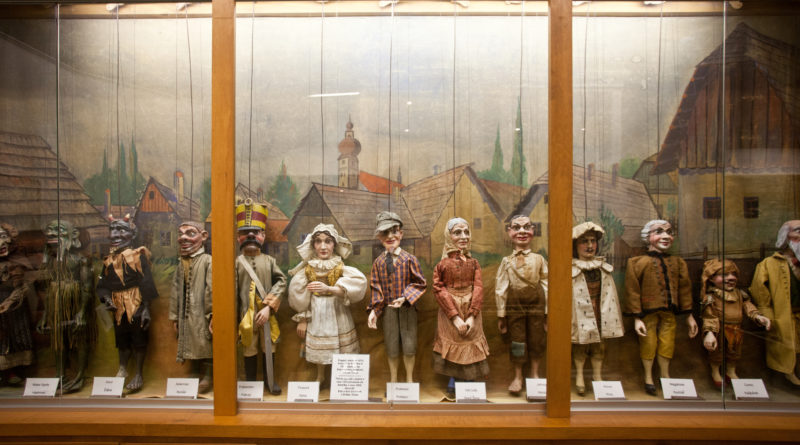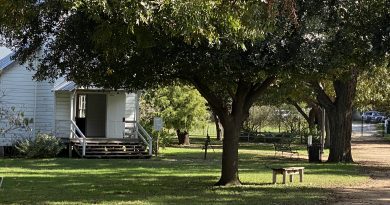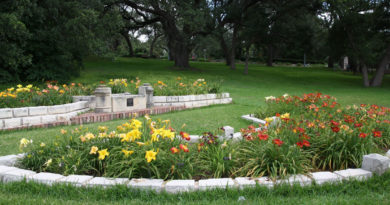Czech Out Central Texas
Moravian, Bohemian culture, ethnicity alive and very Texan
By Janna Zepp | Photos from Tex Appeal archives
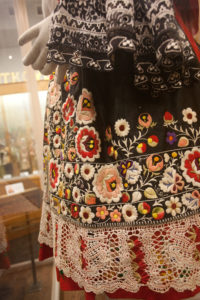
Central Texas is full of Czechs — or Czexans — a fact all of which we should already be aware. In fact, we have so many, that I need to expand beyond Bell County just to do justice to the telling of this tale.
Czech diaspora to Texas began after the revolutions of 1848 changed the political climate in Central Europe, and after a brief interruption during the U.S. Civil War, continued until World War I. Concentrated in Central Texas, Czech Texans have preserved their identity through the Painted Churches of Texas, traditional Czech events, and bakeries specializing in Czech pastries.
Czechs first settled in Texas, traveling from Bohemia, Moravia and Austrian Silesia. Czech settlers usually identified themselves as Austrian, German, Bohemian, Slovak or Moravian. Czech immigration to Texas began as early as the 1820s, but most immigrants made the journey as individuals. Large-scale and family immigration began with Rev. Josef Arnost Bergman, described as the father of Czech immigration to Texas by some sources, and his family in 1850.
Once settled in Texas, Bergman wrote letters to families in Europe, encouraging them to come to Texas. Czech settlement was driven by the availability of land in Texas, and you can see it personally by driving north on Interstate 35 toward Dallas.
West is a predominantly ethnic Czech town between Waco and Hillsboro, and it’s most people’s first taste of what it means to be a Czexan…and I do mean taste. West is home to the Czech Stop and the Little Czech Bakery. If you’ve never had a kolache or klobasnik, the bakery is a good place to start.
I’m from Texas, but I have to confess that I really don’t know that much about our Texas-Czech culture. A late friend of mine, Ginger, lived in Bristol, just outside Ennis, and she was married to a Czech whose last name is Mensik. It’s through Ginger that I learned some things about our Texas Czechs. For starters, Czechs have an extremely close-knit family unit, and they are intimately tied to the land on which they live.
Most Texas Czechs are descended from Moravian immigrants, and they still speak Czech in the Moravian dialect, rather than the Bohemian dialect other Czech Americans use.
Czech communities stretch from Williamson County, through Bell, McLennan, Hill, Kaufman and Ellis counties. There are concentrations of Czech towns on the Texas Coastal Prairie too, mostly in Wharton, Fort Bend and Victoria. One of our Central Texas Czech communities is right here in Bell County. Zabcikville is at the intersection of FM 2269 and 437, 10 miles east of Temple and has a population of 40.
Ennis isn’t a large town, but it is on a particular weekend in May. The Annual National Polka Festival is held in Ennis, and the town gets full of Texas Czechs getting their “Whoopie John” on. There’s a fraternal hall there: the Sokol Activity Center. “Sokol” is the Czech word for “falcon.” The parking lot is usually full on that weekend and the hall is packed with people in traditional Czech clothing.
I looked up the Sokol Activity Center on the Internet, and this is how it was described on the National Polka Festival website: “With a century of continuous service to the Ennis community and its guests, the 30,000 square foot Sokol Activity Center located two miles east of downtown Ennis on Highway 34 carries on a deeply rooted tradition that started in 1908. A proud group of immigrants banded together to preserve the heritage brought from their homeland while embracing American patriotism and the athleticism synonymous with Sokol.”
I’m not sure which Czechs are prouder of: being Czech or being American. Add to that being Texan, and that’s a whole lot of national pride rolled into one culture.
An example of this Texas-Czech pride is in their fraternal organizations. Fraternal orders are a very big deal with Texas Czechs. If you happen to see a building with SPJST on it, that’s an acronym for “Slovanska podporujici jenota statu Texas” which just gave my spell-check program fits. In English, that’s the “Slavic Benevolent Order of the State of Texas.” Organizations such as the SPJST grew out of a national Czech fraternal order, but split off to become a Texas institution. More Texas pride at play, I imagine. A local friend of mine, Bennet, once told me what the acronym actually spells out in English, but it’s not something to repeat in polite company, though I laughed harder than was appropriate when he told me.
I mentioned the National Polka Festival earlier. That’s not the only Czech-specific festival in Texas. We also have Czech Fest in Rosenberg, Czhilispiel in Flatonia and WestFest in West. I’ve not been to any of them, but after having seen the turnout at the National Polka Festival in Ennis, I want to. So, I’m brushing up on my Czech. I know that “Jak se máš?” means “How are you?” after seeing it about a million times on car bumper stickers up and down I-35. I’ve learned some other basic words and phrases too, such as “prosím” and “děkuji,” which are “please” and “thank you.”
Now I just need to learn how to say them.
As for Bohemian Czechs in Texas, my best friend is one. She moved to Texas nearly 40 years ago from Minnesota. Becky is actually Bohemian Czech and German. What I know of the Bohemians, I know from her.
Whether Moravian or Bohemian, one thing I definitely know is that they are fabulous cooks. For most Texans, our first encounter with Texas
Czech culture is with the iconic kolache.
Please note: a kolache is fruit-filled. Klobasniky are not but do have sausage in them, including egg, cheese, and the occasional jalapeno.
I found this recipe that’s supposed to be an authentic Czech recipe, and I’m inclined to believe it since the instructions say that they take most of a day to make.
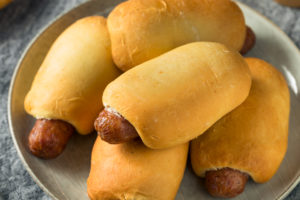 Klobasniky
Klobasniky
This is the old-fashioned way; takes 5-7 hours. Note: Do not skimp on the quality of sausage used.
INGREDIENTS
2 packages dry yeast
1/2 cup lukewarm water
2 cups lukewarm milk
1/2 cup sugar
1 small can evaporated milk (5.33 oz =approximately 2/3 cup)
About 8 cups flour
5 egg yolks
1/3 cup melted butter
1/3 cup vegetable oil
1 tbsp salt
3 drops lemon extract
2 to 2 1/2 pounds cooked, cool smoked sausage
STEPS
In a large bowl, dissolve yeast in lukewarm water. Add milk, sugar, evaporated milk, and 4 cups flour. Mix thoroughly until smooth, cover and let rest at least 1 hour in a warm place.
In a separate bowl place egg yolks, melted butter, oil, salt, and lemon extract. Mix with mixer. Add this to first mixture and blend. Add 3 1/2 to 4 cups of flour gradually and mix well using a wooden spoon until smooth. Cover and let rise until double in bulk.
Place a third of the dough at a time on floured board. Sprinkle flour on top of dough and roll out with rolling pin to about 1/3-inch thickness.
Cut in squares about 2×2 inches or a little larger. Place cooked, cool sausage pieces on each square and enclose, sealing edges.
Place on greased baking sheet with sealed edge on bottom. Brush lightly with melted butter and let rise until double in size. Bake at 425 deg F until light golden brown, about 10 minutes. Yields 6 dozen.
Some prefer to brush kolaches with evaporated milk or melted butter when they have cooled down slightly after removal from the oven.
I’ll bet one bite will make you say, “Je to vynikající!” (“It is delicious!”)

